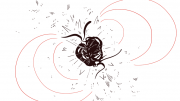The year 2014 saw many exciting space missions come to fruition; the European Space Agency’s (ESA) Rosetta mission saw its first rover land on a comet, and the Indian Space Research Organisation’s Mars Orbiter Mission was lauded as being the first agency to have a successful first mission to Mars. Looking forward, the world can expect just as much excitement for 2015. Here are just a few examples to look out for.
Canadian Space Agency (CSA)
In 2015 the CSA will continue working on large-scale projects in partnership with other space agencies around the world. The CSA has ongoing collaborations with the National Aeronautics and Space Administration (NASA), Japan Aerospace Exploration Agency (JAXA), and ESA.
One of the exciting projects the agency will be working on over the 2015 year is the ASTRO-H telescope, a mission led by the JAXA. ASTRO-H is an X-ray telescope which will study X-ray bands above 10 keV. Canada’s contribution to the mission will be the Canadian ASTRO-H Metrology System, an advanced laser alignment system.
National Aeronautics and Space Administration (NASA)
The National Aeronautics and Space Administration starts 2015 off with a two per cent budget increase from the U.S. government, a promising outlook for the agency, which had been struggling with financial cuts for many years. While two per cent may not sound like a lot, it was more than had been requested by NASA and translates to an increase of US $364 million.
Financial talk aside, NASA expects the Dawn space probe to arrive at Ceres in March 2015. Ceres is a dwarf planet in the asteroid belt between Mars and Jupiter, and the orbiter will map and study the celestial object, getting as close as 375 km from Ceres’ surface.
European Space Agency (ESA)
The European Space Agency will be implementing the next phase of its Cosmic Vision program for the 2015 to 2025 period, a scientific program overseeing long-term space missions for the agency. The program classifies its missions into three categories: S-class (small mission) M-class (medium mission) and L-class (large mission). Each mission also falls under one of the 150 proposed themes.
One of such missions chosen for the Cosmic Vision program is the Euclid mission, an M-class mission exploring Cosmic Vision theme 4: How did the universe originate and what is it made of? Euclid will measure the acceleration of the universe to map the geometries of dark energy and dark matter.




